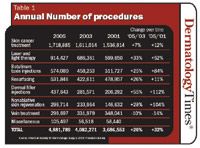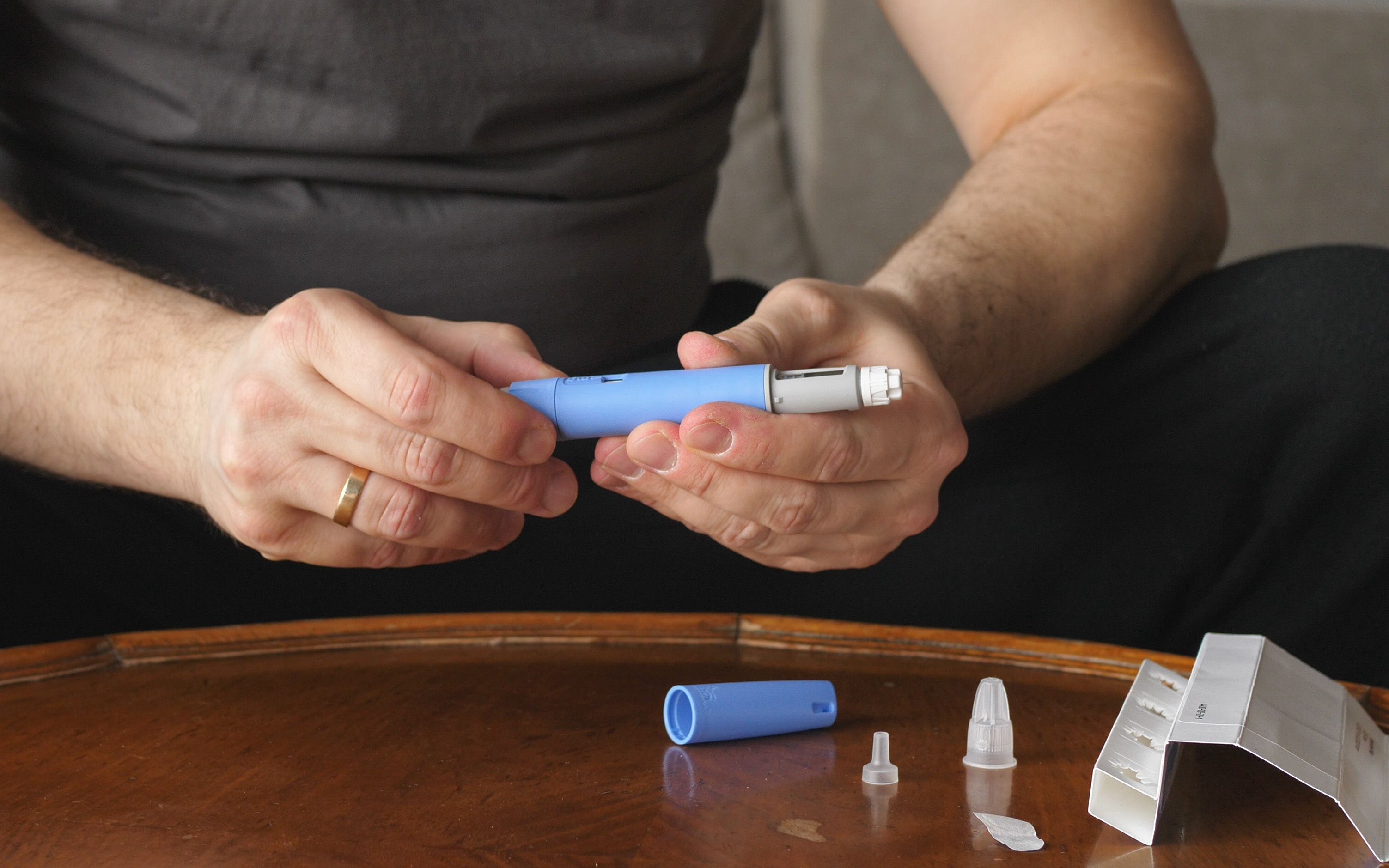- Case-Based Roundtable
- General Dermatology
- Eczema
- Chronic Hand Eczema
- Alopecia
- Aesthetics
- Vitiligo
- COVID-19
- Actinic Keratosis
- Precision Medicine and Biologics
- Rare Disease
- Wound Care
- Rosacea
- Psoriasis
- Psoriatic Arthritis
- Atopic Dermatitis
- Melasma
- NP and PA
- Skin Cancer
- Hidradenitis Suppurativa
- Drug Watch
- Pigmentary Disorders
- Acne
- Pediatric Dermatology
- Practice Management
- Prurigo Nodularis
- Buy-and-Bill
Article
Minimally invasive procedures surge in popularity
National report -- The annual number of skin surgeries performed has climbed 32 percent since 2001, with growth in minimally invasive procedures surging 58 percent, according to a recent survey by the American Society for Dermatologic Surgery (ASDS).

The ASDS contacted 1,200 randomly selected members with a general office and practice survey and one of four different procedure questionnaires, and received responses back from about 400 practices throughout the United States and Canada.
"The biggest changes occurred in the number of dermal filler injections," says Rhoda Narins, M.D., ASDS president. Specifically, the number of procedures performed in this category has risen 112 percent since 2001 and 55 percent since 2003, the last time the ASDS conducted such a survey.
"If one combines fillers, nonablative lasers and light treatments and botulinum toxin injections, the greatest trend is toward minimally invasive surgery," Dr. Narins adds, noting that the number of laser resurfacing procedures, nonablative skin rejuvenation procedures and botulinum toxin injections all grew at least 25 percent since 2003.
"This trend has to do with the baby boomers," who want to look better longer, she says.
"In our practice, we've seen growth of approximately 10 percent yearly in noninvasive procedures such as botulinum toxin, fillers and photorejuvenation. We've even seen a rise in hair removal" and vein treatments, reports Robert A. Weiss, M.D., associate professor of dermatology, Johns Hopkins University, and director of the Maryland Laser, Skin and Vein Institute.
Lasers rebound

"For all the talk about nonablative treatments, laser resurfacing remains the gold standard for aging skin. Without comparison, it still has the best ability to treat people in a defined way," says Ranella J. Hirsch, M.D., a private practitioner in Boston and a member of the board of the American Society of Cosmetic Dermatology and Aesthetic Surgery. "Yes, erbium and CO2 lasers create downtime, but in expert hands, with a properly educated and motivated patient, the results are excellent and reproducible" with a high degree of safety, she says.

Dr. Harmon says dermatologists trained in the past 10 to 15 years have embraced these new technologies and the surgical or procedure-oriented approach to skin treatment. Moreover, he notes that innovative new laser and light-based therapies have not only impacted the cosmetic arena, but also have given dermatologists a hands-on option for treating diseases such as psoriasis and vascular malformations.





